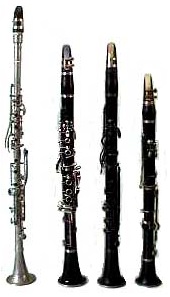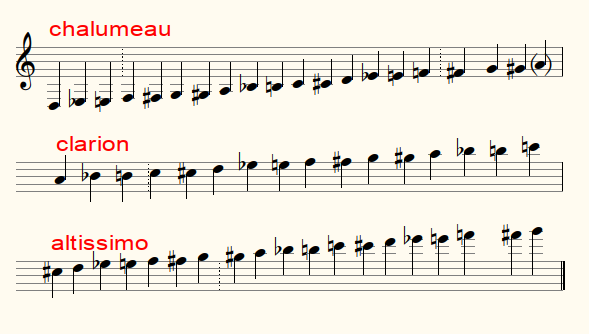Clarinet
Most clarinets play in the key of Bb, although A-clarinets are quite common too.
When you want to play along with non-transposing instruments, something has to happen with your notes...
If you have access to the notes as written in C (as for piano, flute or violin) it's an easy trick: go to the part modification dialog, select transposition C to Bb and you're done.
For a clarinet in A more or less same story, only select transposition C to A.
Now what if you have a part written for tenor saxophone and want to use ith with your A clarinet ?
In the part modification dialog, select transposition Eb to A and that's it.
Say, if you have a piece of music written in D major (two sharps) for the violins with a Bb-clarinet part coming with 4 sharps, and you want to play that piece with your A-clarinet?
In the part modification dialog, select transposition Bb to A and that's it.
It might be useful to use fingering-symbols like L or R for clarinet parts.
To make sure that a clarinet sounds (more or less) like a clarinet use the instrument dialog
clarinet specifics
It may be necessary/useful to add fingering symbols as L or R where necessary as a playing aid for grips that can be played with either left or right finger.
In some styles of music, it is necessary to adjust the pitch of some notes to be played while playing. Unlike a piano, for example, you can vary the pitch on a clarinet while playing. A number of symbols in the trill menu are for this purpose.
In order for a clarinet part to sound (more or less) like a clarinet, it makes sense to also select a clarinet as sounding instrument for the part.
If you edit/write parts for clarinet as a non-clarinetist, it is useful to know where register transitions take place.
The chalumeau register (without duodecime valve) runs from D3 to A4. The clarion register (overblowing, with duodecime key depressed) runs from A4 to C6. Above this is the altissimo register from C#6 to - depending on the skills of the clarinetist - G7, which requires double overblowing.
Bass clarinet
A bass clarinet is usually tuned in B-flat and sounds one octave lower than the regular B-flat clarinet. A bass clarinet is ideal for playing bass parts. To quickly create a bass clarinet part from chord symbols, use the layout templates in MusiCAD. You can of course also convert an existing double bass part to bass clarinet (adjust clef, and C-Bb transposition)


